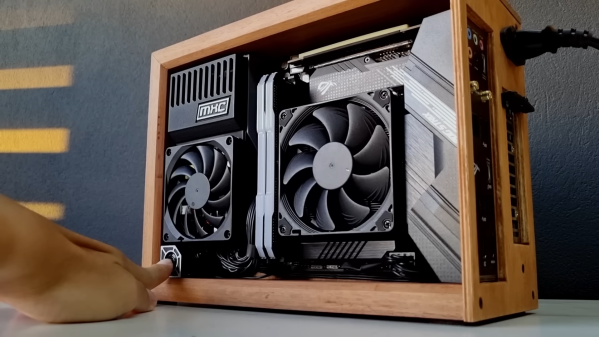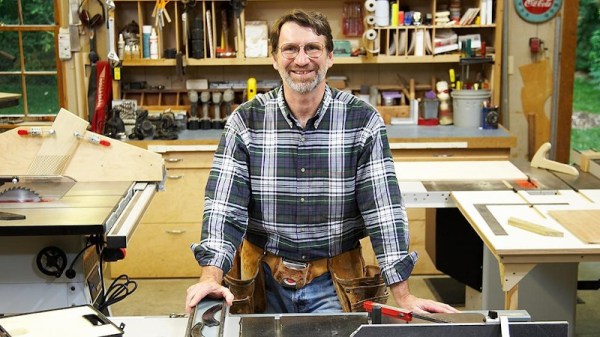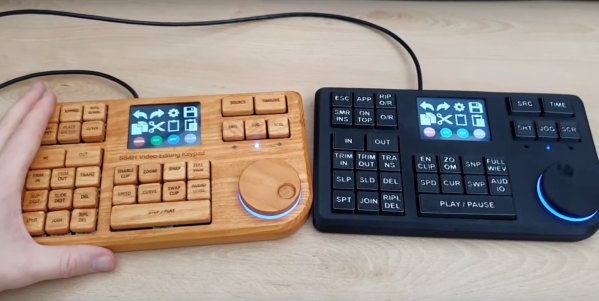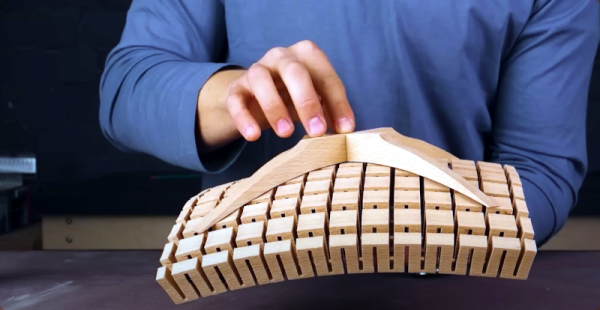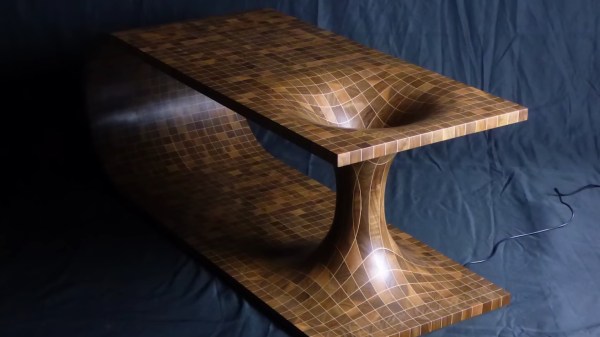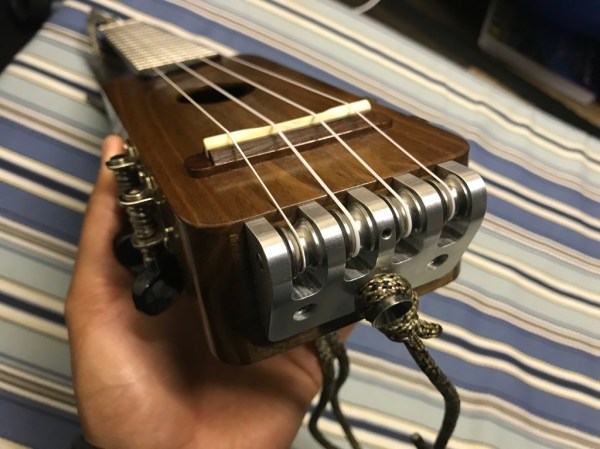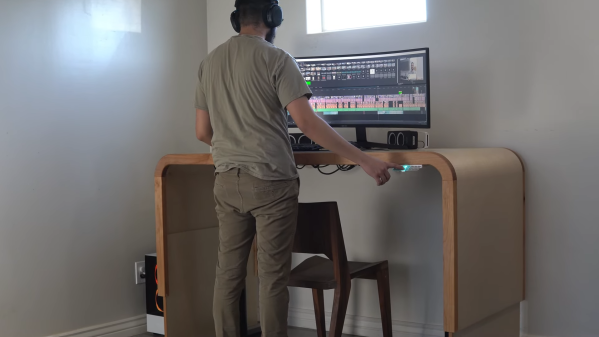Computer cases have come a long way from the ugly beige boxes of the early 2000s. Still, if it was going to sit on his desk, [MXC Builds] wanted something with a little more class. His custom Ironbark ITX PC seems to fit the aesthetic nicely.
The case’s outer shell is ironbark wood cut at 45 degrees and joined for a beautiful waterfall edge (the wood grain seems to flow uninterrupted). The power supply was heavily modified to take a thinner but larger fan, and a new cover and intake grill were 3D printed. As there were no mounting holes on the bottom of the power supply, he printed a bracket with spring clips to hold the PSU securely. Next, he routed a PCI riser cable to the other side of the internal panel so the GPU could mount on the back. He cut custom cables to match up the lengths needed for every run. Finally, rather than placing the power button on the front or top, it was on the side in a custom bracket.
It’s an absolutely gorgeous build that packs some respectable hardware in a tiny space (7.9 L or ~482 in3). The use of 3D printed parts and careful planning results in an incredibly tidy computer that most would proudly display on their desk. It is an open-air case, and if you’re looking for something a little more enclosed, perhaps this mid-century PC might whet your appetite.
Continue reading “Wooden ITX PC Case Smacks Of Sophistication”

